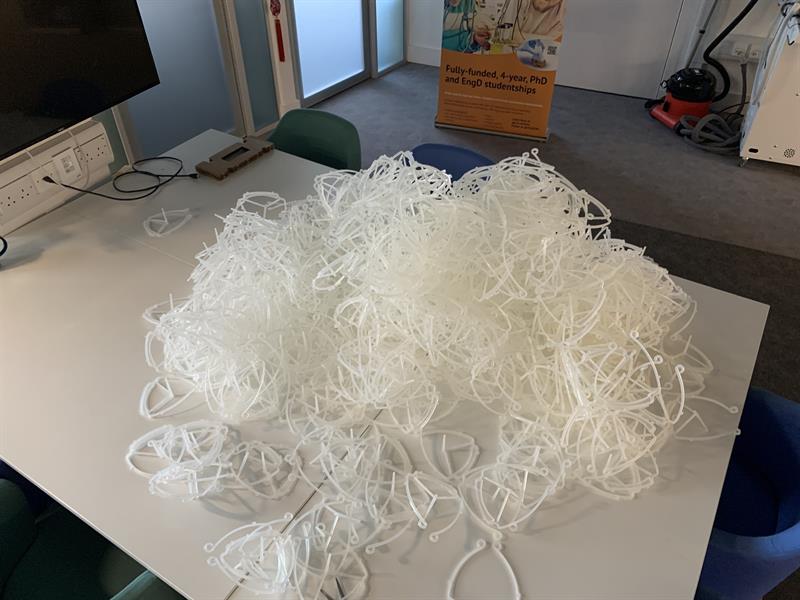A team from the University’s James Watt School of Engineering has repurposed an injection moulding machine, usually used to support research projects, to produce safety visors instead. Over the last couple of weeks, they have created more than 3,000 visors and made them available free of charge to those in need, including shop assistants and care home workers.
The team, led by the School’s Professor Nikolaj Gadegaard, began exploring the possibility of using 3D printers to produce the bands at the end of March. They pooled 3D printers from across the University to make prototype headbands, based on open-source designs shared on the internet.
However, they soon realised that the printing process was very slow compared to injection moulding. School technicians Tom Dickson and Wilson Macdougall worked flat-out for three days to create a mould template suitable for use in the University’s equipment, which manufactured small parts for biomedical research before the pandemic began.
Now the team can produce a headband in just 26 seconds, and could manufacture 1,000 a day or more for as long as they are required by carers.
Says Professor Gadegaard: “A few weeks ago, when it was emerging that carers were likely to be affected by shortages of PPE, we were keen to do whatever we could to help.
“We’re really pleased that we’ve been able to use the expertise we have here at the James Watt School of Engineering to come up with a very promising safety visor which could make a difference for frontline staff.
“The School provided us with the funds to start investigating our options and buy the raw materials we need, which means we can offer the visors free of charge to carers. Having our own injection moulding tools allows us to produce at a scale each day which is equivalent to nearly 100 3D printers working around the clock.”
The engineering team has been assembling headbands and transparent visors with the help of volunteers from across the School. They have been assembling the visors in the School’s open-plan creativity space while adhering to strict social distancing rules.

Injection-moulded parts
So far, they have managed to produce more than 3,000 pieces of PPE, many of which have been shared with workers across the city, and they expect to produce thousands more in the coming weeks.
They’re also anticipating a need for assistance with materials from other organisations and members of the public in the near future.
Prof Gadegaard adds: “We currently have enough raw material to keep producing the headbands themselves for several weeks, and expect to be receiving more from suppliers soon.
“However, the plastic acetate visors themselves are becoming more difficult to source, and that could be where we start to run into trouble. We’ve already issued a plea to colleagues for spare 250 micron acetate sheets and we’d be happy to hear from anyone who would be willing to donate any they might have in their stationery cupboards. Anyone who would like to help can get in touch by emailing covid19-ppe@glasgow.ac.uk.
“If we receive more than we can use, we will be happy to share with the many other local groups who are working hard to provide visors to those in need.”










